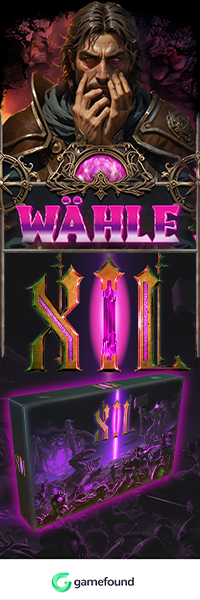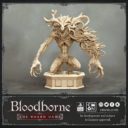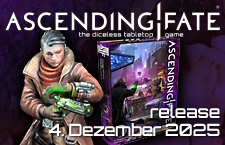CMON: Bloodborne Entwicklungstagebuch Teil 4
Die Klerikerbestie ist ein furchteinflößender Gegner in Bloodborne und im vierten Teil des Entwicklungstagebuches wird auf das Erkunden der Stadt Yharnam im kommenden Brettspiel von CoolMiniOrNot eingegangenen.
Enraging the Cleric Beast will only increase its ferocious attacks! Hunters be weary, for he is a massive threat, and leaves no survivors… Coming soon to Kickstarter Bloodborne: The Board Game.
Bloodborne Design Diary (Part 4): Exploring YharnamOne of the unsung marvels of the Bloodborne world is its fantastic setting design and map-layout. Yharnam itself is a seemingly endless and sprawling city that makes you feel insignificant just by existing. The trick, however, is that while it gives you that huge sprawling feel, the map itself is ingeniously laid out with quick access and shortcuts to most parts.
The first time you explore an area it can be dizzying with the corridors and pathways that seemingly have no direction or reason, but the more you explore and understand the map, the more it all syncs together, and eventually you’ll find yourself almost instinctually knowing how to get directly from the Courtyard Lantern to the Great Bridge in record time.
Bloodborne might be most famous for its combat, but its sense of exploration and discovery are also paramount to its overall experience. Bringing this to the board game was therefore an important element to incorporate. It was this fact that led us to decide on utilizing a variable-tile-system. Basically, each Chapter will list a certain number of specific tiles to use, usually the famous locations from the game, such as the Grand Cathedral or the Tomb of Oeden, and then have the players take a number of random tiles and combine them into a (face-down) stack. The players will have their starting location and from there on it’s a matter of uncovering the world. As players move, they’ll flip over a tile, populate it accordingly, and continue on, building the overall map as they explore.
This means no two games will ever be the same. Even if you’re playing everything exactly the same, the specific order of the tiles, how they connect, what’s on them, etc etc will dynamically alter how you approach each game. It’s also important to note that, if you’re going to be successful anyway, that revealing the map isn’t a slow process. Speed and urgency are key features when playing, and, should a player really decide they need to, it wouldn’t be hard to sprint across most of the map in one or two turns- The freedom of movement is another aspect we wanted to maintain.
One thing we wanted to move away from was the typical idea that people had when it comes to the term “Dungeon-Crawler”, which is actually why I prefer “Action-Exploration” to anything else- This isn’t a game where you’re going to slowly and methodically open doors, turn corners, search for traps… No. This is about being out on the Hunt and achieving your goals before the city is overtaken. More so, your overall goals should always be noted and remembered- if you’re not moving forward (with your Hunt, not necessarily “literally” forward) then you’re wasting time, and time is your most precious resource.
When playing, it won’t be uncommon to reveal most, if not all the map, fairly early on in each game session. This is a good thing, however, because then it becomes a matter of “Ok, we know where things are, how things are laid out… Now how do we accomplish all the goals we need to do?”
Of course, that is just one aspect of exploring the world. The other key aspect is that, going into each Chapter (the name for each individual game in a Campaign) is that you’re going to go in relatively blind. As a Hunter, it’s your job to figure out the overarching mystery and plot surrounding whatever Campaign you’re in- the game isn’t going to hand you anything. At the start, you’ll know roughly the points of interest worth checking out and have a general idea of what you need to do. Beyond that, however, it’s up to you to uncover the city’s secrets.
It could very well be that, should you do exceedingly poor in your play-through, the game could end with your Hunters having learned nothing, and then you’re done right there. Conversely, by exploring and actively searching for answers you will be rewarded with Insight, and come that much closer to figuring out why events are happening, what is causing the problems you’re here to fix- and that is key to your success in the overall Campaign.
It’s not merely enough to just go out there and kill… Well, you could, but, at the very end, when you’re standing over the corpse of some unspeakable monstrosity… Sure, it’s been slain, but if you did so without actually learning why it existed in the first place, what problem have you really solved?
There will always be more monsters, after all, but only in learning of their origins can we hope to actually overcome them.
Of course, on the topic of insight and the gaining of knowledge, one might do well to remember the fate of Micolash, and his words: “Grant us eyes. Plant eyes on our brains, to cleanse our beastly idiocy.”
by Michael Shinall
Quelle: CMON auf Facebook






Kommentare